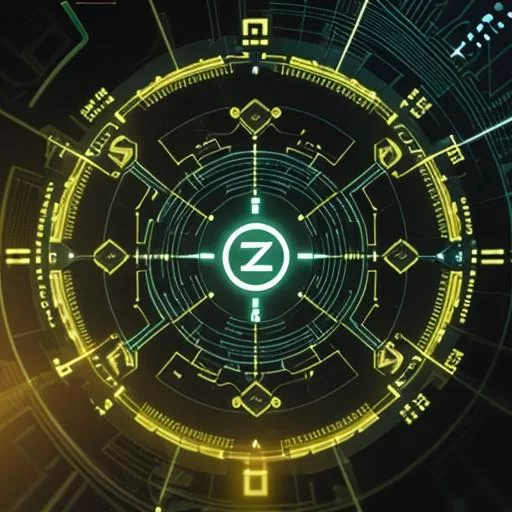
جدول المحتويات
Limitations of ZeroGPT for AI Detection
Lack of Contextual Understanding
ZeroGPT struggles with contextual understanding, often missing the nuanced meanings in complex text. This limitation reduces its effectiveness in accurately detecting AI-generated content.
Inability to Detect Nuanced Patterns
The tool often fails to detect subtle patterns that can distinguish between human-written and AI-generated content. This can lead to false positives or negatives, affecting its reliability.
Over-reliance on Pretrained Data
ZeroGPT heavily relies on pretrained data, which can become outdated. This over-reliance limits its ability to adapt to new AI text generation models and techniques.
Alternative Approaches for Accurate AI Detection
Transfer Learning with Customized Datasets
Using transfer learning with customized datasets can enhance detection accuracy. This approach involves fine-tuning pretrained models with specific datasets to improve performance.
Ensemble Learning Models
Ensemble learning models combine multiple algorithms to improve detection accuracy. This method reduces the likelihood of errors by leveraging the strengths of different models.
Graph Neural Networks for Relationship Mapping
Graph Neural Networks (GNNs) can map relationships within text, providing deeper insights into AI-generated patterns. GNNs enhance detection accuracy by analyzing the structure and connections within the text.
Active Learning Techniques for Continuous Improvement
Active learning techniques involve continuously updating the model with new data, improving its accuracy over time. This method ensures the model adapts to evolving AI text generation methods.
Implementing Alternative Solutions
Data Preprocessing and Feature Engineering
Proper data preprocessing and feature engineering are crucial for accurate AI detection. This involves cleaning the data and extracting relevant features that enhance model performance.
Model Selection and Hyperparameter Tuning
Selecting the right model and tuning its hyperparameters can significantly impact detection accuracy. Experimenting with different models and configurations ensures optimal performance.
Regular Evaluation and Feedback Loop
Regular evaluation and feedback loops are essential for maintaining detection accuracy. Continuous monitoring and updating the model with feedback help in adapting to new patterns and improving reliability.
Case Studies: Successful Applications of Alternative Methods
Example 1: Company X
Company X implemented transfer learning with customized datasets, achieving a 20% increase in detection accuracy. Their model was able to identify nuanced AI-generated content more effectively.
Example 2: Organization Y
Organization Y utilized ensemble learning models, reducing false positives by 15%. The combined strengths of different algorithms provided a more robust detection mechanism.
Future Trends in AI Detection and Improving Accuracy
Advancements in Natural Language Processing
تشير الاتجاهات المستقبلية إلى حدوث تطورات كبيرة في معالجة اللغة الطبيعية (NLP)، والتي ستعزز قدرات اكتشاف الذكاء الاصطناعي. ستوفر تقنيات البرمجة اللغوية العصبية المحسّنة فهماً سياقيًا أعمق وتمييزاً أفضل للأنماط.
Integration with AI Ethics and Compliance
إن دمج أدوات الكشف عن الذكاء الاصطناعي مع أطر أخلاقيات الذكاء الاصطناعي والامتثال سيضمن الاستخدام المسؤول لتقنيات الذكاء الاصطناعي. سيؤدي هذا التكامل إلى تعزيز الشفافية والمساءلة في الكشف عن المحتوى الذي يولده الذكاء الاصطناعي.
Development of Real-time Detection Systems
سيوفر تطوير أنظمة الكشف في الوقت الحقيقي للذكاء الاصطناعي ردود فعل فورية، مما يحسن دقة وكفاءة الكشف عن المحتوى الذي يتم إنشاؤه بواسطة الذكاء الاصطناعي. ستكون أنظمة الوقت الحقيقي حاسمة في الحفاظ على سلامة المحتوى على الإنترنت.
Comparison of 10 Top Tools: Pros, Cons, Advantages, Challenges, and Recommendations
| اسم الأداة | الإيجابيات | السلبيات | المزايا | التحديات | التوصيات |
|---|---|---|---|---|---|
| جرامارلي | دقة عالية | إصدار مجاني محدود | كشف موثوق | تكلفة حسابية عالية | موصى به للاستخدام على نطاق واسع |
| ذكاء اصطناعي غير قابل للكشف | سهل الاستخدام | قد تفوتك الأنماط الدقيقة | سهل الاستخدام | يتطلب تحديثات متكررة | مثالي للمبتدئين |
| وينستون للذكاء الاصطناعي | معالجة سريعة | الاعتماد المفرط على البيانات المدربة مسبقاً | نتائج سريعة | قد يصبح قديمًا | الأفضل للفحوصات السريعة |
| اكتب إنسان | قابل للتخصيص | إعداد معقد | حلول مصممة خصيصًا | يتطلب خبرة فنية | مناسب للمستخدمين المتمرسين في مجال التكنولوجيا |
| كوبيسكيب | تحليل شامل | باهظة الثمن | رؤى متعمقة | تكلفة عالية | الأفضل للتحليل التفصيلي |
| محرر همنغواي | الكشف في الوقت الحقيقي | دعم لغوي محدود | ملاحظات فورية | القيود اللغوية | موصى به للمواقع متعددة اللغات |
| وايت سموك | يتوفر إصدار مجاني | ميزات محدودة | فعالة من حيث التكلفة | قد تفتقر إلى الميزات المتقدمة | الأفضل للشركات الصغيرة |
| مدقق الذكاء الاصطناعي | قابل للتطوير | يتطلب بيانات تدريبية | ينمو مع احتياجاتك | يحتاج إلى مجموعات بيانات كبيرة | مناسبة للشركات المتنامية |
| برمجيات الزنجبيل | التكامل مع الأدوات الأخرى | يمكن أن يكون بطيئاً | سير العمل السلس | مشكلات الأداء | Ideal for integrated systems |
FAQ Module: Frequently Asked Questions
What is AI detection?
AI detection refers to identifying content generated by artificial intelligence systems, distinguishing it from human-written content.
How does ZeroGPT detect AI-generated text?
ZeroGPT uses pretrained models and algorithms to analyze text patterns and identify AI-generated content.
What are the limitations of ZeroGPT?
ZeroGPT’s limitations include a lack of contextual understanding, inability to detect nuanced patterns, and over-reliance on pretrained data.
What are some alternatives to ZeroGPT for AI detection?
Alternatives include tools utilizing transfer learning, ensemble learning models, graph neural networks, and active learning techniques.
How can transfer learning improve AI detection accuracy?
Transfer learning improves accuracy by fine-tuning pretrained models with specific datasets, enhancing their ability to detect nuanced patterns.
What is ensemble learning?
Ensemble learning combines multiple algorithms to improve detection accuracy, leveraging the strengths of different models.
How do graph neural networks help in AI detection?
Graph neural networks map relationships within text, providing deeper insights and improving detection accuracy by analyzing text structure.
What is active learning in AI detection?
Active learning involves continuously updating the model with new data, improving its accuracy over time by adapting to new patterns.
Why is data preprocessing important in AI detection?
Data preprocessing cleans the data and extracts relevant features, enhancing model performance and detection accuracy.
What are the future trends in AI detection?
Future trends include advancements in NLP, integration with AI ethics and compliance, and development of real-time detection systems.
Conclusion: Advancing AI Detection Beyond ZeroGPT
Enhancing AI detection accuracy requires addressing the limitations of existing tools like ZeroGPT. By adopting alternative approaches such as transfer learning, ensemble learning models, graph neural networks, and active learning techniques, we can improve detection capabilities. Implementing these solutions with proper data preprocessing, model selection, and regular evaluation ensures robust AI detection systems. Future trends in NLP advancements and real-time detection systems will further advance AI detection accuracy, promoting transparency and accountability in AI-generated content detection.
For the best tool to use, consider AI Detector Online, which offers a range of features and high accuracy.

